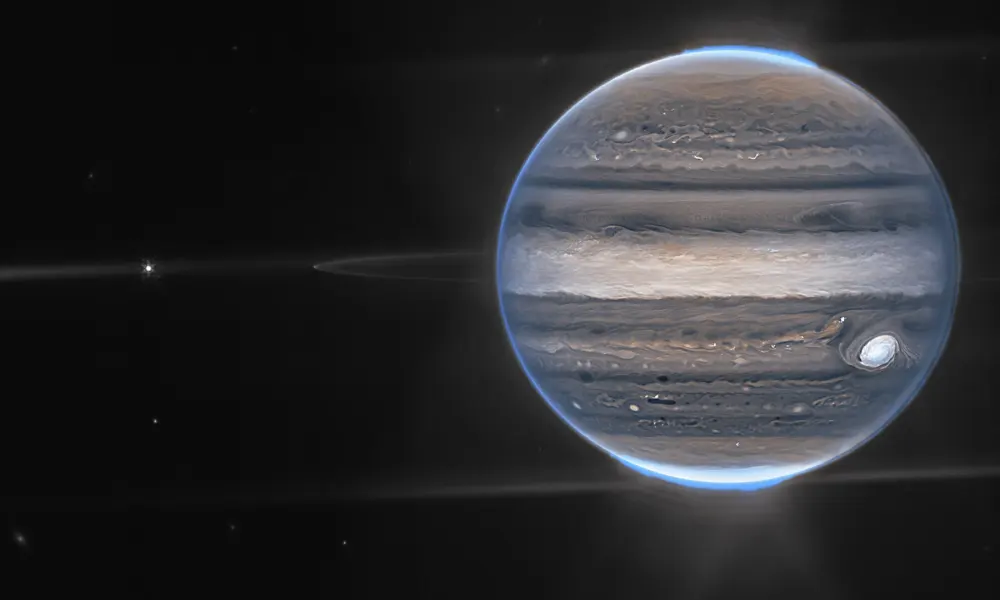News
NASA: James Webb Space Telescope captures brilliant sharp details of Jupiter

On 27th July, the James Webb Telescope captured artificially colored infrared images showing precise details of the planet Jupiter.
“We’ve never seen Jupiter like this. It’s all quiet incredible,” said Imke De Pater, planetary astronomer and professor at California University. “We hadn’t really expected it to be this good, to be honest. It’s really remarkable that we can see details on Jupiter together with its rings, tiny satellites and even galaxies in one image.”
Click here to view the main image of Jupiter
The swirling of solar winds through the magnetic poles of planet causes aurora. The ionized Hydrogen can be seen through bright red highlights on both the poles, which are surrounded by green channels at higher altitudes. The third filter hued in blue shade depicts light reflected from deeper clouds. The Great Red Spot around the equator and the compact cloud regions appears white in this false spectroscopy.
The team, who led the observation along with Thierry Fouchet, professor at Paris University released the image on 22nd August. The Image captured with NIRCam instrument after several exposures in various filters were collected to create a mosaic, which was further processed for corrections of the errors caused due to different snap taken at different time.
The F212N filter mapped yellow-green colors, F360M mapping red-orange shades, and F150W2 highlighting the cyan. Images were processed with the help of Judy Schmidt of Modesto, California who has worked for Hubble Space Telescope and others for past 10 years.
“Something about it just stuck with me, and I can’t stop. I could spend hours and hours every day,” she said. Her goal, she added, is to “… try to get it to look natural, even if it’s not anything close to what your eye can see.”
Along with the Jupiter, its rings, and some of its small satellites like Amalthea, which is nearly 250*150 kilometers in dimension, and Adrastea which is around 20 kilometer wide can also be noticed.
Click here to view the image of Jupiter along its system
The JWST’s infrared wavelengths gave a new perspective of viewing the Jupiter. This will help to learn interplay of dynamics and chemistry of the atmosphere around the auroral regions, and the Great Red Spot of the Jupiter.
-

 Civilization5 days ago
Civilization5 days agoTrump’s Venezuela Gamble and America’s Shifting National Security Strategy
-

 Civilization5 days ago
Civilization5 days agoOperation Absolute Resolve: Anatomy of a Modern Decapitation Strike
-

 Civilization4 days ago
Civilization4 days agoTen Reasons To Cheer the Arrest of Maduro
-

 Executive22 hours ago
Executive22 hours agoWaste of the Day: Can You Hear Me Now? No.
-

 Civilization23 hours ago
Civilization23 hours agoTrump’s version of the Monroe Doctrine
-

 Civilization2 days ago
Civilization2 days agoOne Fell Swoop: Lawsuit Eyes Death Blow to Racial Preferences
-

 Civilization1 day ago
Civilization1 day agoTrump’s New Doctrine of Precision Deterrence
-

 Civilization12 hours ago
Civilization12 hours agoThe Snatch and Grab of Maduro Was Not ‘Illegal’

